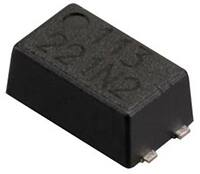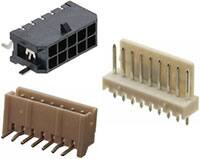IP68 enclosures offer reduced installation times
Alan Lewis, Business Development Manager, Retex UK, explains how thoughtful design is leading to a generation of IP68 enclosures which offer end-users greater flexibility of choice and reduced installation times.
When talking about enclosure quality, IP68 certification is the Holy Grail. IP68 enclosures are able to protect against water ingress even when fully submerged, making them ideal for applications in extremely harsh environments. In order to guarantee the water resistance, most manufacturers resort to cumbersome, double housing designs or gel filled solutions. While these can be quite bulky and time consuming to install, the inconvenience is generally accepted as a necessary hassle to achieve the required protection. But is that still the case?
IP68 enclosures are only necessary for applications where the enclosure will be fully submerged in water or subjected to continuous contact with moisture – for example when buried beneath the ground. In order to ensure that the correct level of protection is guaranteed, most enclosure designers will over manufacture their products. While this drives up the unit cost, and often makes installation harder for end-users, this practice is accepted as OEMs and designers believe that it is the only way.
Standard IP68 solutions often involve specifying complex and expensive accessories to update a standard enclosure; cumbersome protective housings which encase the standard part; or even silicone gel to displace the air inside the housing and prevent water from making contact with the connection. While all of these solutions undoubtedly work, they also have significant drawbacks. For example silicone gel solutions are extremely messy and time consuming during installation, and make access extremely hard in the event that maintenance is required later on.
Fortunately, thanks to modern materials and advanced manufacturing techniques, it is now possible to create IP68 protected enclosures and junction boxes which have a similar footprint and installation time to lower IP rated products with comparable installation space.
Diecast enclosures have long been a popular choice for outdoor applications where increased protection is required both from atmospheric condition as well as impacts. The material is resistant to corrosion (with additional cathodic dip coatings readily available), lightweight and extremely robust which makes enclosures ideal for industries such as marine, oil and gas and mining where the risk of impact damage is higher.
However, most diecast enclosures don’t offer IP68 protection as the seal – which is typically a foam construction attached to the enclosure after assembly – cannot be relied upon not to fail if the lid is over tightened. Retex UK has bucked this trend by developing Series 68 enclosure with a high quality gasket seal that has been certified to IP68 – even after an impact of up to 7 joules.
It’s not just Retex that is expanding the possibilities for IP68 protection in the enclosure market. Other innovations include the Techno TeeBox junction box range - which uses cable gland technology to quickly make a connection with easy access to maintenance – and the Paguro range – which uses memory gel to circumvent the usual problems of silicone gel solutions. So now, more than ever, end-users should explore their options and research what is available before committing to a traditional solution.


